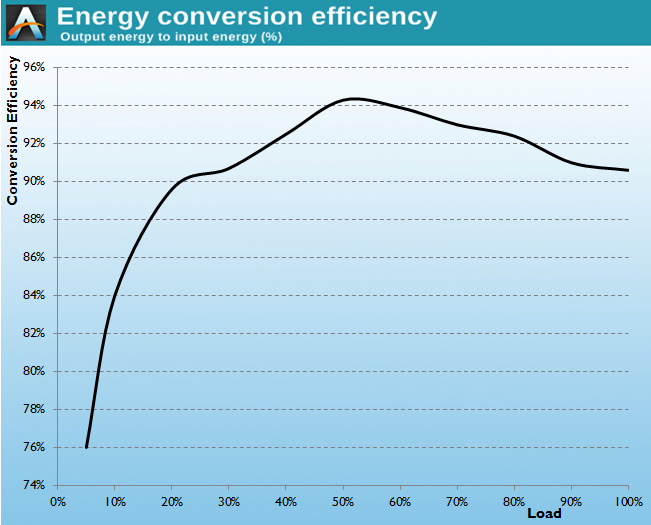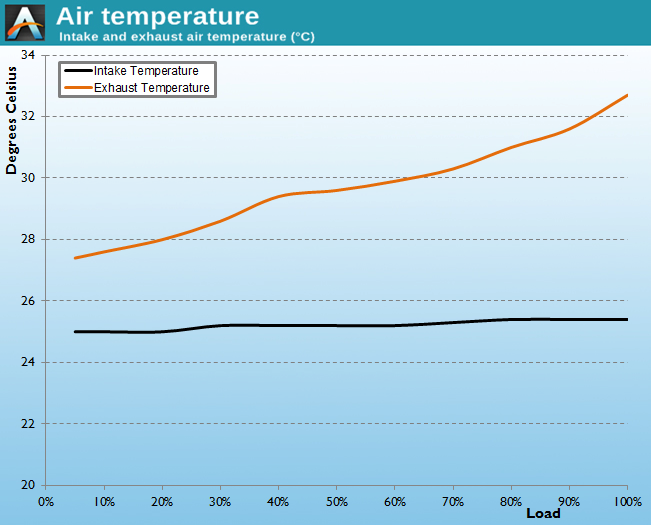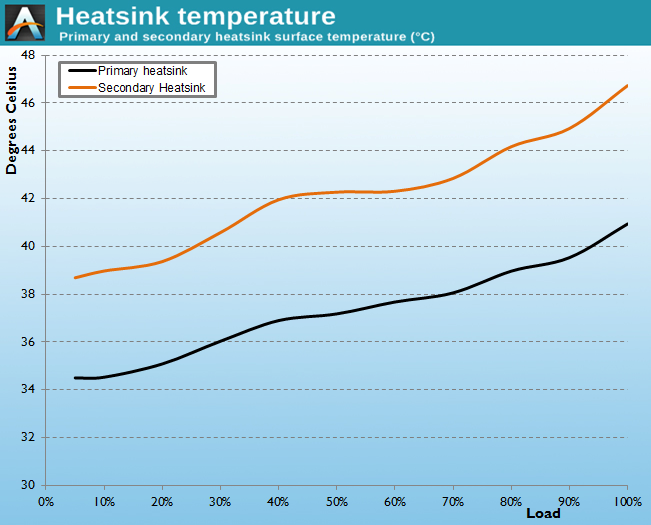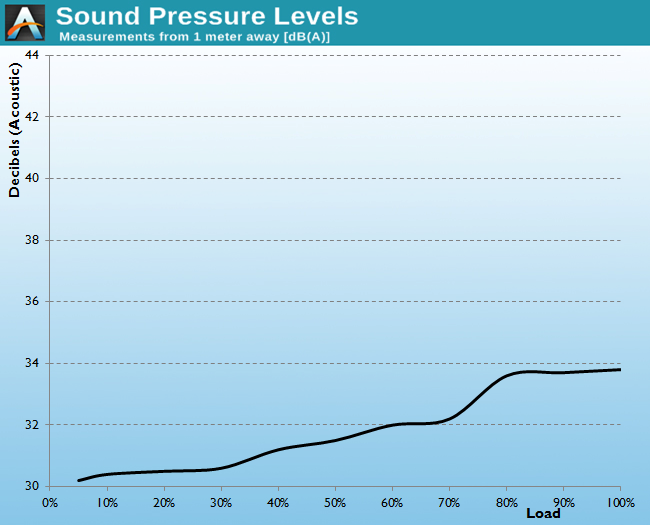Seasonic S12G 650W Power Supply Review
by E. Fylladitakis on February 28, 2014 2:20 PM EST- Posted in
- Cases/Cooling/PSUs
- Seasonic
- 80 Plus Gold
Test Equipment and Methodology
For the testing of PSUs, we are using high precision electronic loads with a maximum power draw of 2700W, a Rigol DS5042M 40MHz oscilloscope, an Extech 380803 power analyzer, two high precision UNI-T UT-325 digital thermometers, an Extech HD600 SPL meter, a self-designed hotbox, and various other bits and parts. For a thorough explanation of our testing methodology and more details on our equipment, please refer to our How We Test PSUs - 2014 Pipeline post.
Cold Test Results
At room temperature, the Seasonic S12G 650W unit easily honors its 80 Plus Gold certification, reaching up to 94.4% efficiency at 50% load. Inside the normal operating range of the power supply, which is between 20% and 100% load, the efficiency remains above 90% at all times. In fact, if the S12G was just a little more efficient while heavily stressed, it could hit 80 Plus Platinum status.
As expected, the efficiency drops sharply when the load is below 20% (130W in this case), dropping down to 76% with a 32W load, but it goes up to 84% when the load is increased to 65W. These are considered "out of range" conditions and do not affect the 80 Plus certification of the unit, but considering many modern PCs will idle at 40-60W, it's still worthwhile to look at performance at these loads. Of course, at 32W load the difference between 75% and 85% efficiency only amounts to around 5W at the outlet.
Both the air and the heatsink temperatures might appear a little high for a unit of this capacity and efficiency operating at room temperature, but that is because the fan of the Seasonic S12G 650W PSU is being "lazy" -- or "quiet" if you prefer. The fan is thermally controlled and it looks like Seasonic decided it didn't need to spin faster under such testing conditions. During our SPL testing, the fan reaches audible levels only after the unit hits ~80% of its rated output.














77 Comments
View All Comments
tynopik - Monday, March 3, 2014 - link
> Shorting a component = OCP protection. I always perform such tests before proceeding to testing the unit.good to know, thanks
> Still, that is not a fault of the PSU, it is an issue with your energy supplier.
Disagree. No matter what the input is to a power supply, there are only 2 acceptable outputs: in-spec power or nothing.
It should NEVER put out-of-spec power on the rails, period.
RAYBOYD44 - Monday, March 3, 2014 - link
My Uncle Jordan recently got Lexus GX 460 SUV from only workin on a pc at home...GrahamATrotmann - Monday, March 3, 2014 - link
n a PSU with a fan. Waste of money when my main reason for getting it was negated. I heard the new generations of Seasonic are almost always silent, but I'm happy with the SilentNight, too. http://num.to/4257*9142*5469Ram21 - Monday, March 3, 2014 - link
So, maybe I am blind, but how long are the cables? In previous power supply reviews, there were info graphics that had the lengths each type of cable. Great review, and looking forward to seeing more reviews with this level of detail.HangFire - Tuesday, March 4, 2014 - link
I agree! While mundane, cable lengths and connector types and counts are an essential part of any power supply review. Anyone buying a power supply is doing so for a reason, often because their current P/S is short on power, connectors, or cable lengths to accomodate a recent upgrade.tynopik - Tuesday, March 4, 2014 - link
> It is entirely realistic, simply because a) they are unusual and b) are not a problem of the PSU itself but a problem caused by your grid.Saying problems with the grid aren't caused by the PSU is
a) true
b) irrelevant
What matters is that power problems do happen in the real world and thus the PSU has to deal with it
what is 'unusual'?
Once every five years is unusual, but that doesn't mean having your computer blow every five years is acceptable
It IS a problem of the PSU because the PSU has to be able to handle 'unusual' events and at all costs protect the components connected to it.
Any PSU that puts out enough voltage to fry the attached components is a FAILURE, no matter what the input is or how unusual it is.
Popskalius - Thursday, March 6, 2014 - link
other than modularity, is there a difference with the SeaSonic SSR-650RM 650W. You guys think $15 more is worth being modular?